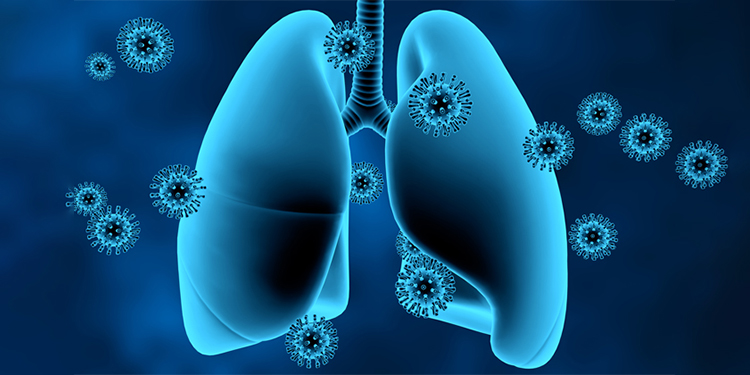Covid 19 - What is happy hypoxia and how will it affect Covid patients?

When the second wave of coronavirus affected millions of individuals in India, the epidemic took a sad turn. It not only took many lives, but it also left a large number of people gasping for breath. COVID-19, as we all know, is a respiratory infection that wreaks havoc on our lungs and other organs.
It can cause a decline in oxygen levels in severe COVID patients, making breathing difficult and causing chest pain. Yet what about those who have no discomfort, no pain, and no visible indicators of low oxygen levels in their blood but are later diagnosed with it? The phenomenon is known as "happy hypoxia," and here's all you need to know about it. According to medical professionals, Happy Hypoxia is a situation in which the oxygen levels in a COVID-19 patient's blood are low but there are no visible signs, symptoms, or pain.
According to experts, coagulation (or clotting) happens in the blood arteries of the lungs, causing a decline in the oxygen level. Hypoxia is a condition that occurs when the blood in your body lacks oxygen. The typical oxygen saturation level is between 94 and 99 percent. When COVID-19 affects your lungs, your oxygen levels fall.
Coronavirus is a respiratory infection that causes broad inflammation throughout the body, including the lungs and respiratory system. It restricts the flow of oxygen-rich blood throughout the body, making it harder for patients to breathe.
COVID-19 Patients Show Signs of Low Oxygen LevelsCOVID-19 does not usually induce a reduction in oxygen levels. Mild COVID-19 symptoms may include fever, cough, and loss of smell and taste. People who have difficulty breathing or have shortness of breath at any time, however, must be transported to the hospital.
In normal circumstances, let us try to comprehend the symptoms of low oxygen levels in the blood in hypoxia patients. Shortness of breath, chest pain, confusion, a change in lip colour (to a pale blue), and nose twitching are all common symptoms.
How to Recognize Happy HypoxiaContinuous monitoring of oxygen levels in COVID-19 patients is advised by experts. Whether the patient has a minor infection or no symptoms at all, if positive, their oxygen saturation level must be monitored on a regular basis. In this context, a pulse oximeter can be useful. It is a portable device that can detect the level of oxygen in the body.
Any further issues can be avoided if happy hypoxia is detected early. The risk of hospitalisation is reduced if medicine and treatment are started on time.
When Is Oxygen Therapy Necessary for a Patient?If the oxygen level falls below 93 percent, it indicates that oxygen therapy is required. If your oxygen saturation is greater than 95, you do not need to take oxygen, according to medical experts.
If it is less than 94, you must keep a tight eye on it. Even so, if the patient is healthy, oxygen may not be required because there is enough oxygen in the blood.
Why do COVID-19 patients' oxygen levels drop?Coronavirus is a respiratory infection that causes broad inflammation throughout the body, including the lungs and respiratory tract. It restricts the flow of oxygenated blood in the body, making it difficult for patients to breathe. Experts believe that coagulation, or extensive clotting in the blood veins of the lungs, is what causes a decline in oxygen levels.
What exactly is happy hypoxia, and why is it so scary?Hypoxia occurs when your body's blood oxygen levels are extremely low. Normal oxygen saturation levels are between 94 and 99 percent. When COVID-19 damages your lungs, your oxygen levels may plummet.
While hypoxia can be diagnosed by a variety of symptoms ranging from shortness of breath to chest discomfort and other respiratory issues, joyful hypoxia does not produce any such clear visible indicators, which leads to late detection and repercussions. Happy hypoxia, as the name implies, is so named because the patient suffering from this sickness appears happy and normal on the outside until the disease is diagnosed.
In COVID-19 patients, there are signs of low oxygen levels.
COVID-19 does not always result in low oxygen levels. Mild COVID symptoms may include fever, cough, and loss of smell and taste. People who find it difficult to breathe or experience dyspnea at any time must be sent to the hospital and receive medical attention. If you're still wondering what it's like to have a low oxygen level in your body, here are some symptoms to help you understand it better.
When should someone get oxygen therapy?
When the SPo2 levels fall below 93 percent, it is a warning that oxygen therapy is required.
For those individuals who have an oxygen saturation of 92 or 94, there is no need to take high oxygen just to maintain your saturation. It will not be of any use. You do not need to take oxygen if your saturation level is greater than 95. If it is less than 94, you should be closely monitored, but you may not require oxygen because oxygen is still present in the blood if the patient is healthy. " For COVID treatment, contact BEWELL hospital today.
